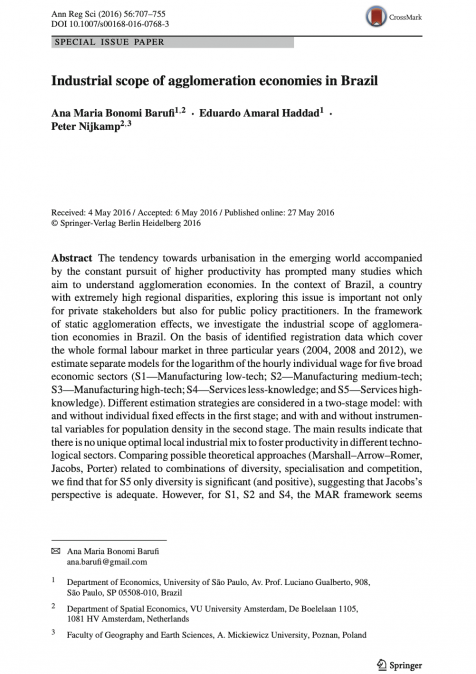Publications /
Opinion
Brazilian conditional cash transfers are small amounts of money the government distributes directly to very poor households on condition that their children attend school and are vaccinated. The money goes to the women of the household, because research undertaken in the 1990s – and later confirmed in other countries – showed an increase in babies' height and weight when women have more control over household income. Greater control over household resources by women can strengthen an economy where poverty dominates, as spending patterns tend to be shaped in ways that benefit children. There is also strong evidence that improvements in women's education and health are associated with better outcomes for their children.
Reducing gender inequality can boost economic growth in surprising ways. Most analyses of infrastructure investment focus on the ways it can lift growth by reducing the time and resources wasted in production and transportation. However, its gender-asymmetric effects in poor countries are less well-known. More and better access to rural roads, water and power grids reduce the time mothers allocate to household chores and raise the time allocated to work outside the home, human capital accumulation and/or child-rearing. The latter leads to improved health in both childhood and adulthood. Crucially, the increase in time devoted to human capital accumulation raises women's bargaining power, which translates into a stronger family preference for girls' education and children's health, an increase in the average share of family income spent on children, and a weaker preference for current consumption.
There is also the productivity effect of reducing gender inequality of opportunities. In 2012, the World Bank estimated that labor productivity could rise by up to 25% in some developing countries if barriers to women working in certain sectors or occupations were scrapped. It pointed out that maize yields would rise by almost one-sixth in Malawi and Ghana if women farmers were to have the same access as men to fertilizers and other inputs.
In the same report, the World Bank cited an example from India. Giving power to women at the local level led to increases in the provision of public goods, such as water and sanitation, which mattered more to women.
Some dimensions of gender inequality in developing economies – like educational enrolment and labour force participation – have diminished during the last few decades. Formal rights and constitutional guarantees for women have advanced in some countries. However, there is still much scope to boost economic growth via policies orientated to reducing inequality.
In Brazil, progress has been made in reducing gender inequality. Women's literacy rates have increased and the share of the female labor force with tertiary education is even higher than for men. Government policies – some of them implemented in co-operation with the private sector – have also been addressing the needs of mothers, providing healthcare before and during pregnancy and at birth, and childcare and education.
A lot remains to be done. Gender gaps in access to formal employment and income persist. Even though there has been an increase in the share of women employed in the non-agricultural sector, their comparative advantage in terms of their share of tertiary education has not been reflected in wages.
Pierre-Richard Agénor, a professor of economics at the University of Manchester, and I have illustrated the impact of lowering gender inequality on raising Brazil's economic growth. Suppose a government successfully implements anti-discrimination laws that lead to the elimination of gender bias against women in the workplace. Using Brazil's data, our model-based calculations suggest an 'equal work, equal pay' policy could add up to 0.2 percentage points to a country's annual GDP growth rate. This is just the direct effect of increases in women's take-home pay, not considering other effects on the allocation of talent and the production of human capital.
Using our model, we simulated the effects of a budget-neutral increase in government spending on infrastructure. Calculations suggest that an increase of one percentage point of GDP could add between 0.5 and 0.9 percentage points to Brazil's annual rate of output growth, once direct and indirect effects — most notably through changes in women's time allocation and their bargaining power over family resources — are accounted for.
Gender inequality is a strong deterrent to prosperity. It must receive attention far beyond the annual International Women's Day.





